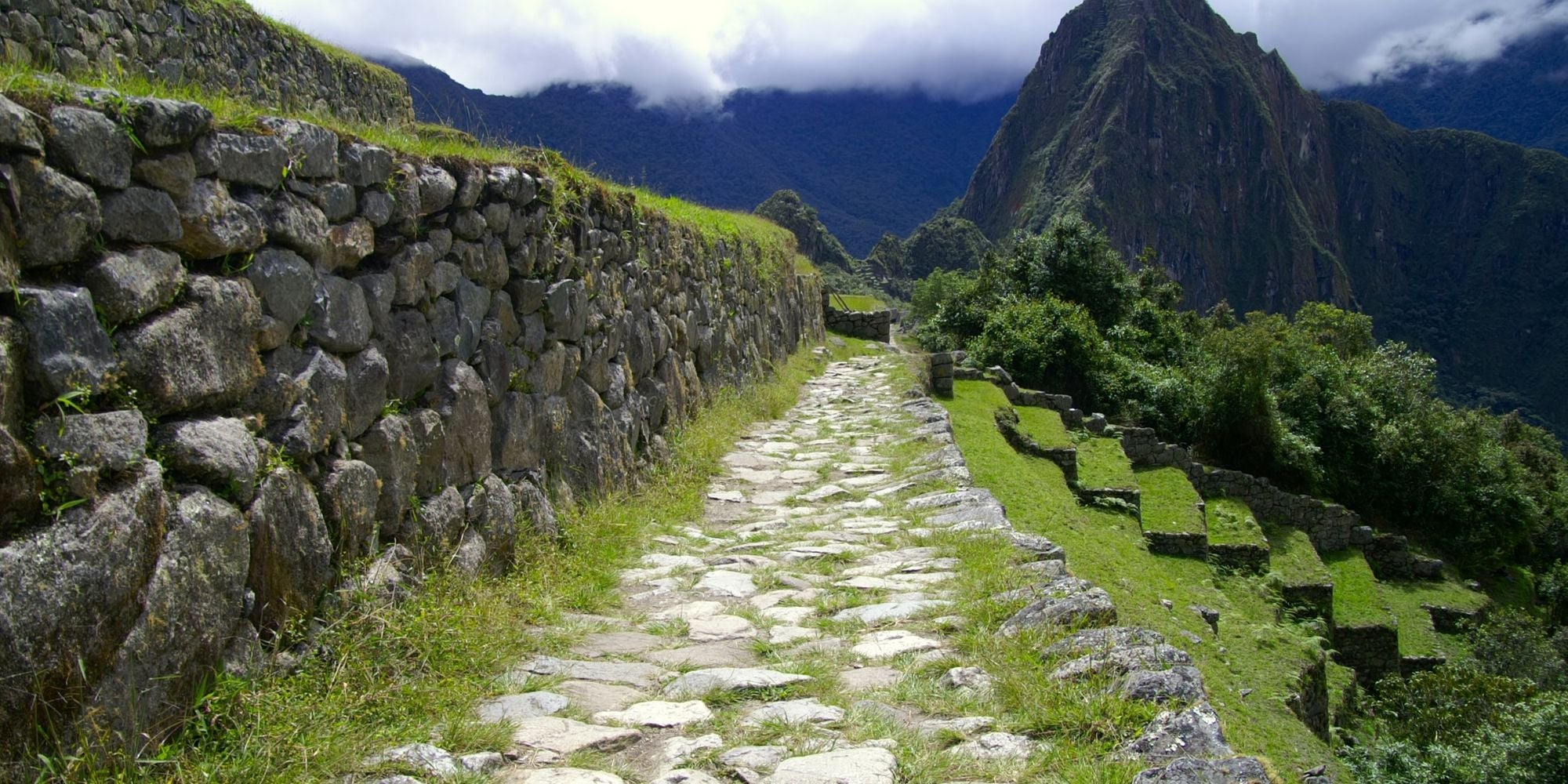
Many visitors to the Inca Trail in Peru experience altitude sickness. There are many different strategies people employ in order to avoid altitude sickness while hiking the Inca Trail. Here are three simple ways to avoid Inca Trail altitude sickness and more info about Inca Trail elevations.

The Inca Trail is a trekking trail in Peru that was built by the ancient Inca civilization with altitudes exceeding 8000 feet. It's one of the most popular destinations for backpackers and hikers, with some parts of the trail reaching altitudes of 13,780 feet high.
The hardest part is on day 2 which starts at 9,800 feet (3000 meters) and ascends to the highest point at Dead Woman’s Pass. Each of the 4 day trek averages between 8000 and 13000 feet high, and ends at Machu Picchu which sits at 7972 feet in altitude (2,430 meters).
These high heights at the Inca Trail lead to severe risk of altitude sickness, which we cover below.
Inca Trail altitude sickness is a common problem that can affect hikers and other people who are visiting the Inca Trail. The severity of these symptoms depends on how quickly you ascend, how much experience you have with climbing at high altitudes, and your general health.
It is caused by the high elevations with less oxygen levels, which can make you feel tired, dizzy and nauseous.
Inca Trail altitude sickness may include
You should keep an eye out for symptoms of Inca Trail altitude sickness and prevent it from happening by following our tips below.

The Inca Trail is a hiking trail in Peru, and one of the most popular hikes in South America that attracts thousands of tourists every year. With a distance of 26 miles, it takes 4-5 days to hike at up to 10 hours a day.
The Inca Trail is one of the most famous treks in the world. Its popularity has increased over the years and it’s not hard to understand why. The stunning scenery, beautiful ruins and ancient culture are just some of the reasons why so many people want to hike this trail every year.
This ancient trail was built by the Incas and it passes through the Andes mountains. The hike starts near Cusco at Chillca, also called Kilometer 82, and ends at at the base of Machu Picchu.
With altitude over 13000 feet, read further to discover how to avoid Inca Trail altitude sickness.
With a hike that reaches an altitude of 13780 feet, and you need to be well prepared for the Inca Trail.
Altitude sickness is common among hikers who have not acclimatized properly before they start their trek, which is especially hard to do when climbing to elevations this high.
We'll reveal how to prevent altitude sickness naturally, including acclimatization techniques, hydration tablets, and supplements to prevent altitude sickness.
Here are three ways to avoid Inca Trail altitude sickness:

Zaca chewables are great for high altitude journeys as a natural and safe way to feel better faster. Formulated with both Glutathione and DHM, these chewable tablets can help increase recovery, improve endurance, and lower fatigue. Founded out of Colorado and increasing in popularity throughout United States, Zaca is a top choice among altitude supplements. Try Zaca chewable tablets today and enjoy your travels without worry.
SOURCES:
1. Effect of high altitude (7,620 m) exposure on glutathione
https://pubmed.ncbi.nlm.nih.gov/11320641/
2. Dihydromyricetin Improves Physical Performance under Simulated High Altitude
https://journals.lww.com/acsm-msse/fulltext/2014/11000/Dihydromyricetin_Improves_Physical_Performance.6.aspx
3. Inca Trail Elevation
https://en.wikipedia.org/wiki/Inca_Trail_to_Machu_Picchu
Copy the coupon code & use it at checkout